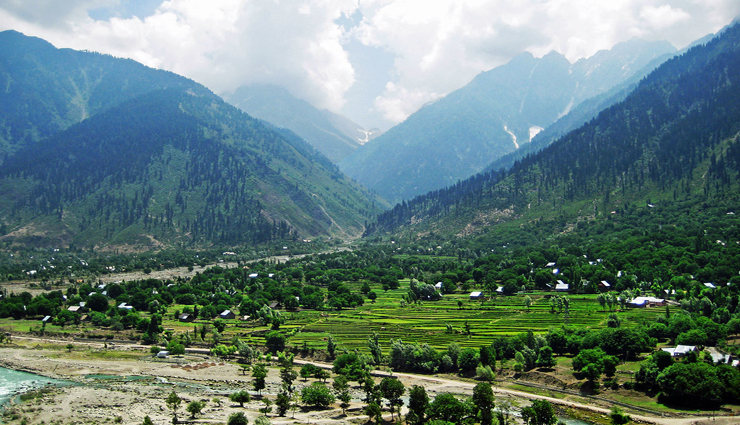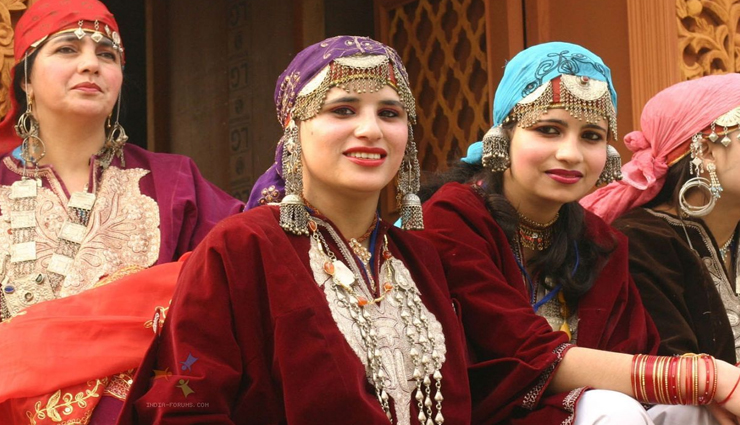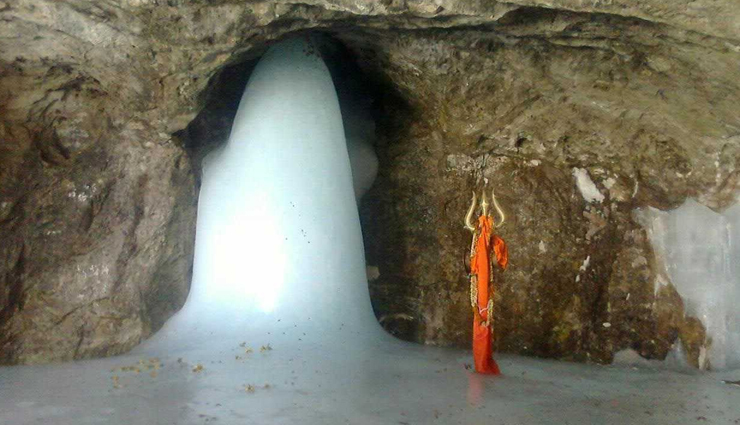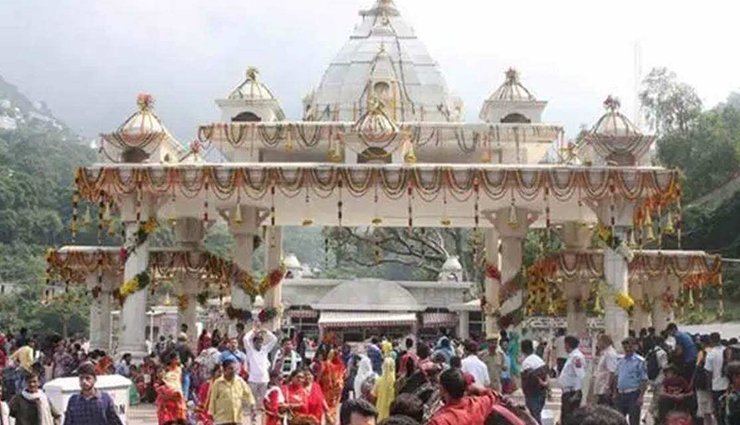38 Interesting Facts About Jammu And Kashmir
By: Priyanka Maheshwari Thu, 27 Aug 2020 12:24:58

Immersed in the beauty of nature, with sprawling, misty hills all around you, pine and deodar trees playing hide and seek with the wind carrying unknown fragrances, lakes that have the color of the bluest eyes, with oarsmen singing hymns in unknown languages, you finally realize there is a paradise on the earth. You open your eyes, and the surroundings would plunge you into a beautiful reverie, a reverie when snow-capped mountains would shapeshift into beautiful damsels, dancing to the tune of time. And you realize there is a paradise on earth and its name is Kashmir. Jammu and Kashmir is a state in northern India. It is located mostly in the Himalayan mountains. It shares a border with the states of Himachal Pradesh and Punjab to the south. Jammu and Kashmir have an international border with China in the north and east.
The Line of Control separates it from the Pakistan-controlled territories of Azad Kashmir and Gilgit-Baltistan in the west and northwest respectively. The state has special autonomy under Article 370 of the Constitution of India.
* According to the history of Jammu & Kashmir, Maharaja Hari Singh was the last ruling Maharaja of the princely state.
* Srinagar was founded by Emperor Ashoka and not the Mughal emperor Jahangir.
* Kashmir’s cultural heritage flourished with the contribution of Hinduism, Buddhism, and Islam.
* The syncretic culture of Kashmir is best encapsulated by the word Kashmiriyat, which described the cultural values of the Kashmiri people.
* Shikara stays are a unique experience highly recommended and usually included in good Kashmir packages.

* The Pir Panjal railway tunnel, or the Banihal railway tunnel, is India’s Longest Railway Tunnel. It is 11,215 km long, 8.4m wide and 7.39m tall. Banihal railway tunnel is India’s longest and Asia’s fourth longest railway tunnel.
* The traditional Kashmiri dress, Pheran, the unique copper kettles called Samovar, the earthen fire pots wrapped in woven wicker called Kangiri, handcrafted walnut furniture and souvenirs, etc. are some uncommon things to check out.
* The seasons in Jammu and Kashmir are spring, summer, autumn and winter.
* Srinagar, in Kashmir Valley, has served as the summer capital, while Jammu has served as the winter capital.
* The best destinations for Kashmir tourism is Srinagar, Gulmarg, Sonamarg and Pahalgam.
* Kalhana, the first Indian history writer, gave a vivid account of the history of Kashmir before the 10th century AD.
* Because of Jammu and Kashmir’s wide range of elevations, its biogeography is diverse.
* The Jhelum River is the only major Himalayan river which flows through the Kashmir valley.
* In Jammu and Kashmir, the principal spoken languages are Kashmiri, Urdu, Dogri, Pahari, Balti, Ladakhi, Gojri, Shina and Pashto.

* Kawa, traditional green tea with spices and almond, is consumed all through the day in Kashmir. Apart from Kawa or Kehwa, Sheer Chai or Gulabi Chai is the traditional beverage of Kashmir. It is pink in colour and salty in taste.
* Amarnath Cave in Jammu and Kashmir has natural Shiv Lingam made of ice which is over 5000 years old and is a prominent Hindu pilgrimage destination. According to a popular legend, Amarnath cave was discovered by a Muslim shepherd, Buta Malik.
* Dras is the coldest inhabited place in India with temperatures reaching as low as -45°C. Dras is the second coldest inhabited place on earth.
* The ruins of Martand Sun Temple is located in Kashmir. It was built around the 8th century CE.
* India’s first floating post office was built on a houseboat at the western edge of Dal Lake in Srinagar.
* Houseboats first appeared in the 1800’s in Dal Lake by Pandit Naraindas to house English visitors.
* Kashmir is said to have been a favorite vacation spot of the Mughals.
* Gulmarg is the most popular ski destination in India. It was originally called Gaurimarg by the shepherds to honour Goddess Parvati.
* The ancient Mughal garden, Chashme Shahi, was built in 1632 AD. The garden is home to a spring, whose waters are believed to possess medicinal properties.

* Vaishno Devi Temple in Katra, Jammu, which is visited by over 81 lakh pilgrims every year, has been awarded the Cleanest Religious Place Award.
* The famous pashmina shawl is derived from under the belly of domestic himalayan goat called changthangi.
* Betaab Valley, located about 15 km from Pahalgam, is named after a Bollywood film of the same name which was shot here.
* Zoji la is an important pass between Ladakh and Kashmir.
* The 9 km long Chenani-Nashri Tunnel is located in Chenani, Jammu and Kashmir. It is India’s longest road tunnel.
* The official ‘State Animal’ and ‘State Bird’ of Jammu & Kashmir are the Hangul and Black-necked Crane respectively.
* Wular Lake is one of the largest freshwater lakes in Asia
* Chenab Bridge is a unique bridge made up of steel, and will resist temperatures upto -20°C.
* Gulmarg Gondola is one of the largest and highest ropeways in India, having a total aerial distance of almost 5 kms.
* Wazwan is one of the traditional dishes in Kashmir. A 36 course meal, it is an integral part of Kashmir.
* Hazratbal Shrine, one of Kashmir’s holiest shrines, is located in Srinagar and houses a strand of hair believed to be that of Prophet Muhammad.
* The Floating Market in Srinagar, is a major tourist attraction and its only kind in India and the third in Asia.
* Kashmir is the largest producer of saffron in India and the third largest producer in the world.
* Indira Gandhi Memorial Tulip Garden is the largest tulip garden in Asia.
* The library in Raghunath Temple in Jammu houses over 6000 manuscripts in several Indian languages.





